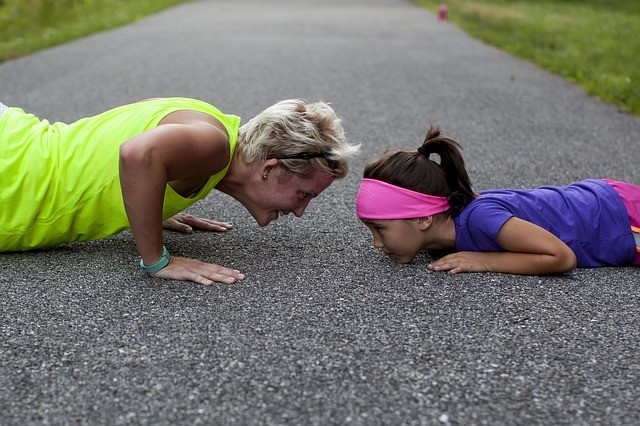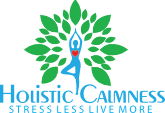There are Four Dimensions of Wellness
1. Physical Wellness
Your physical body allows you to participate fully in your life and all the things you wish to accomplish. When your body is not functioning well, you may experience fatigue, pain, or other symptoms that tell you your body isn’t getting everything it needs.
Those seeking wellness will include a focus on proper nutrition, regular exercise, personal hygiene, sleep habits, and saying no to unhealthy habits. Identifying and controlling your behaviors that impact your physical health will allow you to control your weight, engage in healthy habits, and say “no” to unhealthy behaviors.
This will lead to your optimal physical wellness, contributing to your journey toward wholeness. Instead of focusing just on your diet or exercise routine, physical wellness is really more about creating a life that supports healthy body functions and will allow you to live a long life.


2. Spiritual Wellness
Your spiritual dimension relates directly to how you find meaning or purpose in life as well as what guides you on your journey toward wholeness. The spiritual dimension focuses on your values and how your actions reflect these. We are each guided by our own spirituality, and while this may come from religion, that is not necessary to have spiritual balance. You need to be able to identify your values and beliefs for yourself, then choose a path in life that enables you to live by them in your daily life.
3. Emotional Wellness
The emotional dimension of your life is not just about your feelings but also your emotional presence and how comfortable you are with your emotions. It is also connected to how well you can express your feelings and thoughts as well as relate to those of others. Your emotional wellness includes how well you cope with the challenges of life, as well as how productively you can share your strong emotions with others. Coping with stress, having a sense of mental balance, and your own journey to personal discovery all contribute to your emotional dimension.


4. Mental Wellness
In the same way you want your body to be healthy, you should exercise and stimulate your brain. Developing your intellect involves learning many things, being creative, and solving problems. Furthermore, it involves your openness to novel ideas and experiences, improving on your weak skills, and embracing a perpetual growth mindset. The intellectually healthy embrace cultural experiences, are open to understanding the world in various ways, and discover interests and hobbies to learn more about the world.
What Does it Means to be Whole Person?
Being a whole person means that all of your wellness dimensions are balanced and contribute to each of the others. When your dimensions are well-rounded and healthy, they help you manage the craziness and unexpectedness of life. And when one or more of your dimensions are out of sync, you are no longer living a whole life but instead living to compensate for those areas that are in jeopardy.
Being a whole, well person means your mind, body, and spirit, are working together to bring you happiness and help you find your true joy and passion in life. Being a whole person means full integration of all dimensions of your person so that each component can successfully support the others in reaching their potential.
While some may look at the dimensions and see a separate, compartmentalized function, this is not the case at all. It is that kind of thinking that can lead to imbalance and feeling less than the whole.
When you are focusing on one aspect of your life because it is unhealthy, you make sacrifices in other dimensions of your life, and you lose peace, joy, love, and freedom. But, when other aspects of your life are full and in balance, it actually becomes easier to pay special attention to one dimension that may need more focus and care, because you have the support system necessary to do the important work.
As an example, let’s say you are working on a new project, as you are spending many hours learning something new and focusing on accomplishing a new professional goal. This may mean, though, that you are less focused on maintaining your social relationships or attending to your physical well-being. While your intellectual dimension is healthy, your spiritual and environmental dimensions are taking a hit.
Instead of tallying up each day how each part of your life is doing, though, consider a holistic look at this situation. Are you feeling joy about your work, regardless of the stress and effort you are expending? Are you content with this temporary unsettledness, or does it bring you stress? Are your social relationships supportive of this challenge, or do you find yourself feeling isolated? What have you learned about yourself from this trying time, and how could you apply this to all aspects of your life?
By looking holistically at all of these aspects, which make you a whole person, you can better determine where adjustments need to be made, what parts of your life are helpful and supportive and what parts need attention, and where you are feeling the most vulnerable. It’s this intentional focus on all parts of your life, not just a few, that makes you a whole person that is well, and healthy; it can handle stress better.
7 Benefits of Living as a Whole Person
1. Achieve Balance and Harmony
Finding wellness across all dimensions, you can achieve a balance and harmony between your soul, spirit, mind, and body.

2. Experience Less Stress
When you become a whole person, you experience less stress. You are able to cope with the challenges of life, and you recognize that feeling stressed is a sign of imbalance in one or more of your dimensions. Returning to your intentional study of all aspects of your life will help you relieve that stress and find the peace you desire.

3. Improve Health and Well Being
Being a whole person allows you to enjoy improved health and well-being. Not only will your body be healthier and able to do more and withstand more, but you will have an arsenal of healthy habits to fall back on when things become difficult or life tests you in new ways.

4. Better Mental Health
Becoming a whole person provides you with personal esteem, a healthier outlook on life, and a sense of purpose that leads to better mental health. Wellness across all dimensions leads to less depression and anxiety and improved abilities to overcome mental challenges that throw us off balance now and then.

5. Increase Energy
When you have wellness in all dimensions, you’ll experience more energy. When you have healthy habits that include diet, exercise, sleep, and stress reduction, you’ll notice less fatigue and more pep to your step, overall.

6. Attain Happiness and Joy In Life
Staying social, keeping your mind active, and connecting with a purpose all improve your mood and mental state, as well. All dimensions are responsible for being a whole person, as they all contribute to happiness and joy in life

7. Gain Freedom to Enjoy Life
In addition to all of these, becoming a whole, well person means you live your life in freedom. By embracing the multi-dimensional aspects of your wellness and finding balance with them all, you are able to avoid struggle, negative thinking, and emotional turmoil that plague so many in our world today. You become free from feeling stuck and free to enjoy the life you truly want to live. Finding balance and becoming a whole person can help you find all of these, and so much more.

Choose Your Wellness Strategy
After completing the above assessment questionnaire you should now understand which dimension of wellness you are strong and where you need to grow. Below you can choose which health and wellness strategy you need to work on and then set your goals.
Health and Wellness Action Plan to
Relieve Stress
Implement Your Health and Wellness Strategy
Once you have determined if you are ready and want to move forward, then you can choose one of the wellness strategies below. These basic practices are all integrated with one another. Some of them can be achieved on their own, and others need the help and support of others.
Stress is inevitable part of your life and is responsible for many problems such as anxiety, depression and many other disorders. You can alleviate stress through positive and skillful emotional, mental, spiritual, and physical practices. So, get ready to take action to relieve stress and maintain good health

Mental Wellness
Enhance a sense of well-being. Improve concentration and self-discipline. Reduce anxiety, stress, and overcome depression.

Emotional Wellness
Your emotional state plays an important role to relieving stress and creating mental wellness. Learn our techniques to make a desirable emotional change.

Physical Wellness
Learn how to feel energized and physically fit to improve performance. To attain restful sleep, and what are the essential nutrients to help maintain good health.

Spiritual Wellness
Promote mental health with spiritual practices to create a state of balance with your actions, thoughts and emotions.

Stress Management
When you learn to manage stress effectively by adapting a healthier lifestyle it can prevent disease and help you live a more productive and healthier life.


